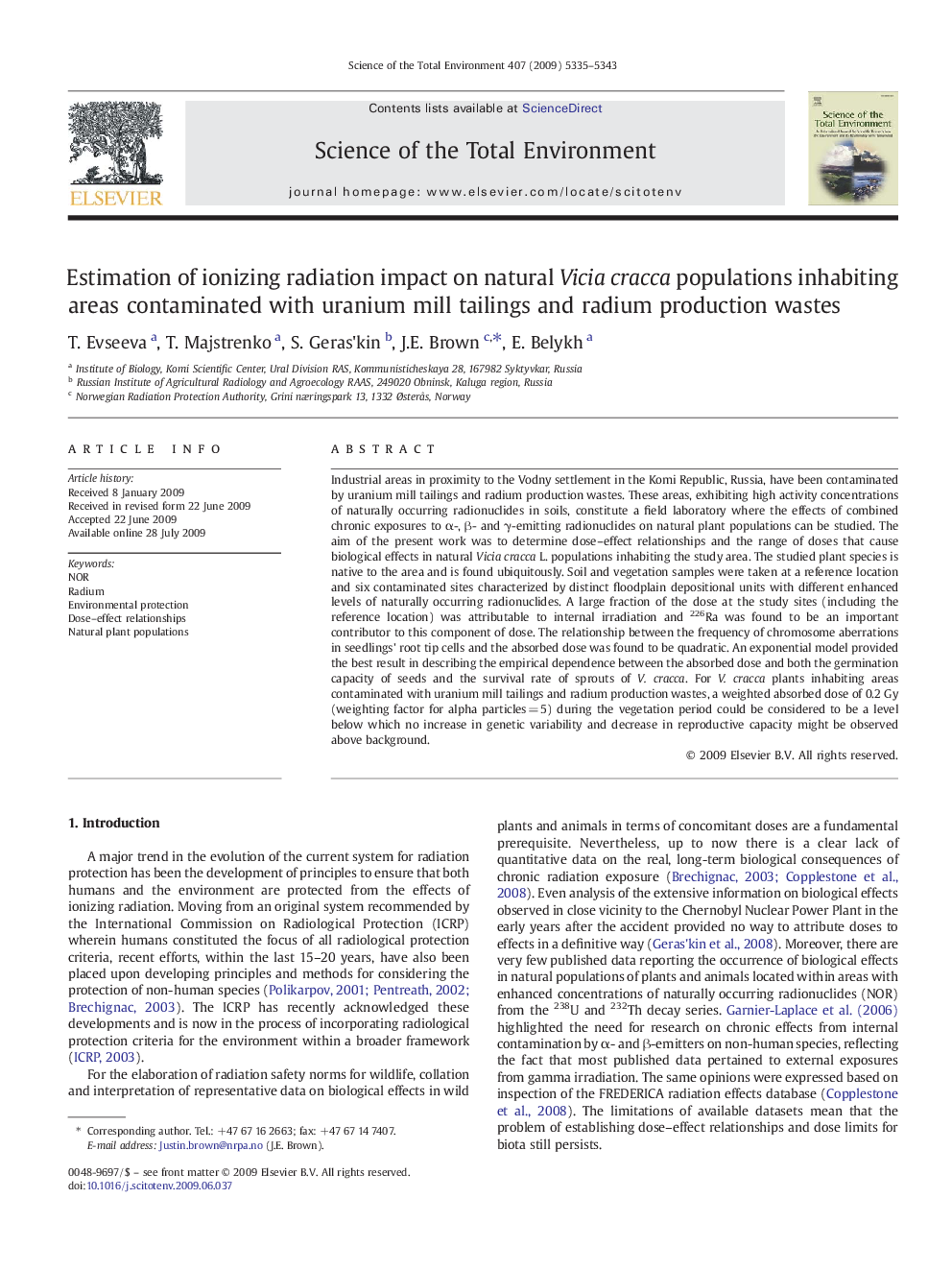| Article ID | Journal | Published Year | Pages | File Type |
|---|---|---|---|---|
| 4431107 | Science of The Total Environment | 2009 | 9 Pages |
Industrial areas in proximity to the Vodny settlement in the Komi Republic, Russia, have been contaminated by uranium mill tailings and radium production wastes. These areas, exhibiting high activity concentrations of naturally occurring radionuclides in soils, constitute a field laboratory where the effects of combined chronic exposures to α-, β- and γ-emitting radionuclides on natural plant populations can be studied. The aim of the present work was to determine dose–effect relationships and the range of doses that cause biological effects in natural Vicia cracca L. populations inhabiting the study area. The studied plant species is native to the area and is found ubiquitously. Soil and vegetation samples were taken at a reference location and six contaminated sites characterized by distinct floodplain depositional units with different enhanced levels of naturally occurring radionuclides. A large fraction of the dose at the study sites (including the reference location) was attributable to internal irradiation and 226Ra was found to be an important contributor to this component of dose. The relationship between the frequency of chromosome aberrations in seedlings' root tip cells and the absorbed dose was found to be quadratic. An exponential model provided the best result in describing the empirical dependence between the absorbed dose and both the germination capacity of seeds and the survival rate of sprouts of V. cracca. For V. cracca plants inhabiting areas contaminated with uranium mill tailings and radium production wastes, a weighted absorbed dose of 0.2 Gy (weighting factor for alpha particles = 5) during the vegetation period could be considered to be a level below which no increase in genetic variability and decrease in reproductive capacity might be observed above background.
